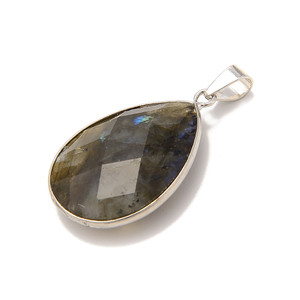
Citrine, Faceted, Natural, Drop One Pendant, 36x20mm
Citrine, Faceted, Natural, Drop, One Pendant with a Metal Alloy Bail, 36x20mm
Citrine is a transparent, yellow variety of Quartz, ranging in color from pale to golden yellow, honey or almost brown, and may contain rainbow or sparkle inclusions. Naturally, it takes its color from the traces of iron in the Quartz and the heat from nearby magmatic bodies. The only difference between Citrine and Lemon.
Quartz is in the saturation and tone of their color. Many gem dealers do not even separate the two and use the name Citrine for all Yellow or Lemon Quartz. The name comes from the French word citron, meaning lemon. Natural yellow citrine is rare and often cut as gemstones, not beads. What is left is mostly are a pale yellow.
Much of the natural Citrine may have started out as Amethyst but heat from nearby magmatic bodies may have caused the change to Citrine. Most citrine on the market is heat-treated Amethyst or Smoky Quartz.
From the earliest of times, Citrine was called the "sun stone" and the gemstone was thought capable of holding sunlight. Citrine comes from Brazil, Madagascar, Russia, Spain, France, and Scotland. This stone is also found in Colorado.
Hardness 7
These pendants are cut, drilled, and polished in China.
Heating is a very common form of enhancement and is used to affect desired alterations of color and/or clarity.
Metal Alloy is a metal made by combining two or more metallic elements, base metals, to give greater strength or resistance to corrosion. In mining and economics, base metals refer to industrial non-ferrous metals excluding precious metals, like silver, gold, and platinum. Base Metals include copper, aluminum, nickel, tin, zinc antimony, bismuth, lead and many more. Metal Alloy, also known as Pewter and is usually a tin based alloy 85-95% of the time but could also be zinc based.
In December of 1994, The US Safe Drinking Water Act defined Lead-free as having less than 0.25% lead content. Most newly made solid pewter on the market today is considered lead free by these standards. But it is still recommended to not give children Metal Alloy jewelry if there is any chance, they will put it in their mouths!







